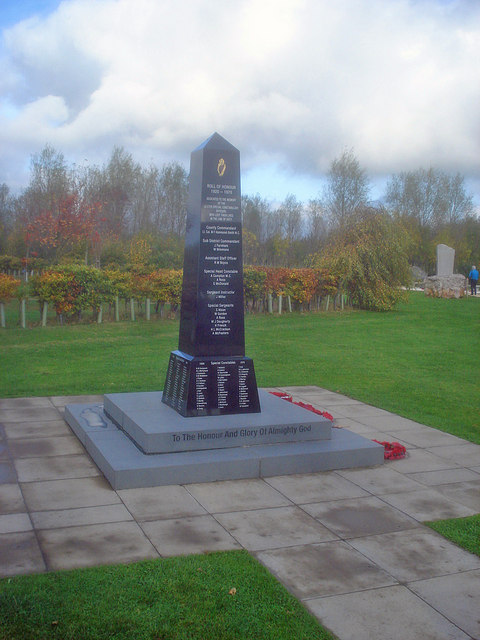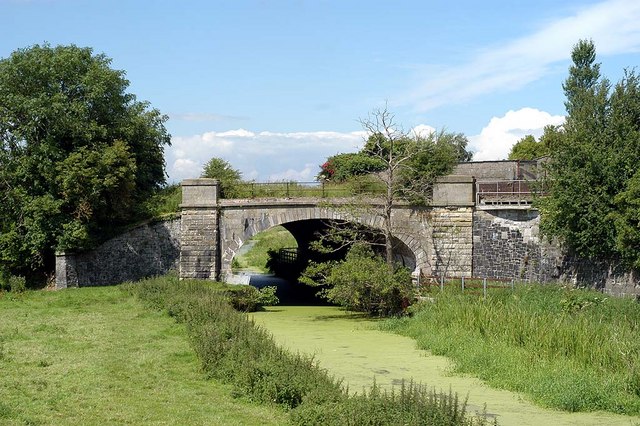|
Clones Railway Station
Clones railway station was on the Dundalk and Enniskillen Railway in Republic of Ireland, Ireland. The Dundalk and Enniskillen Railway opened the station on 26 June 1858. On 11 February 1922 at the station a group of Irish Republican Army volunteers attempted to ambush a party of Ulster Special Constabulary policemen travelling on a train through Clones. The volunteers entered a carriage of a train and ordered the Specials to put their hand up. IRA. Commandant Matthew Fitzpatrick was shot and in the ensuing fight, 4 Specials lost their lives.The Northern IRA and the early years of partition, 1920-1922. Robert John Lynch, Irish Academic Press, 2006 It closed on 1 October 1957. Routes References Clones, County Monaghan Disused railway stations in County Monaghan Railway stations opened in 1858 Railway stations closed in 1957 {{Ireland-railstation-stub ... [...More Info...] [...Related Items...] OR: [Wikipedia] [Google] [Baidu] |
Clones, County Monaghan
Clones ( ; , meaning 'meadow of Eois') is a small town in western County Monaghan, Ireland. The area is part of the Border Region, earmarked for economic development by the Irish Government due to its currently below-average economic situation. The town was badly hit economically by the Partition of Ireland in 1921 because of its location on the border with County Fermanagh in Northern Ireland. The creation of the Irish border deprived it of access to a large part of its economic hinterland for many years. The town had a population of 1,680 at the 2016 census. Toponymy Historically Clones was also spelt ''Clonis'', ''Clonish'' and ''Clownish''. These are anglicised versions of the Irish ''Cluain Eois'', meaning "Eos's meadow". The ancient name was ''Cluan Innis'', "island of retreat", it having formerly been nearly surrounded by water. History Early Christian Ireland The monastery of Clones was established in the 6th century by St. Tighernach. Tighernach was of the f ... [...More Info...] [...Related Items...] OR: [Wikipedia] [Google] [Baidu] |
County Monaghan
County Monaghan ( ; ga, Contae Mhuineacháin) is a county in Ireland. It is in the province of Ulster and is part of Border strategic planning area of the Northern and Western Region. It is named after the town of Monaghan. Monaghan County Council is the local authority for the county. The population of the county was 61,386 according to the 2016 census. The county has existed since 1585 when the Mac Mathghamhna rulers of Airgíalla agreed to join the Kingdom of Ireland. Following the 20th-century Irish War of Independence and the signing of the Anglo-Irish Treaty, Monaghan was one of three Ulster counties to join the Irish Free State rather than Northern Ireland. Geography and subdivisions County Monaghan is the fifth smallest of the Republic's 26 counties by area, and the fourth smallest by population. It is the smallest of Ulster's nine counties in terms of population. Baronies * Cremorne ( ga, Críoch Mhúrn) * Dartree ( ga, Dartraighe) * Farney ( ga, Fearnaigh) * ... [...More Info...] [...Related Items...] OR: [Wikipedia] [Google] [Baidu] |
Dundalk And Enniskillen Railway
Irish North Western Railway (INW) was an Irish gauge () railway company in Ireland. Development The company was founded as the Dundalk and Enniskillen Railway (D&ER) and opened the first section of its line, from to , in 1849. In Dundalk the D&ER line crossed the Dublin and Belfast Junction Railway main line, which was completed between and its own separate station in the same year. The D&ER extended westwards, reaching in 1854, in 1855 and in 1858. In 1859 the D&ER reached where it connected with the Londonderry and Enniskillen Railway (L&ER). The L&ER had been completed in 1854 but had been unprofitable, so in 1860 it leased its line in perpetuity to the D&ER. This gave the D&ER a direct route between Dundalk and . In 1862 the INW opened a branch from southwards to . In the same year the company renamed itself the Irish North Western Railway. In 1863 the Ulster Railway reached Clones where it made a junction with the INW. In 1868 the Enniskillen and Bundoran Railwa ... [...More Info...] [...Related Items...] OR: [Wikipedia] [Google] [Baidu] |
Great Northern Railway (Ireland)
The Great Northern Railway (Ireland) (GNR(I) or GNRI) was an Irish gauge () railway company in Ireland. It was formed in 1876 by a merger of the Irish North Western Railway (INW), Northern Railway of Ireland, and Ulster Railway. The governments of Ireland and Northern Ireland jointly nationalised the company in 1953, and the company was liquidated in 1958: assets were split on national lines between the Ulster Transport Authority and Córas Iompair Éireann. Foundation The Ulster, D&D and D&BJct railways together formed the main line between Dublin and Belfast, with the D&BJct completing the final section in 1852 to join the Ulster at . The GNRI's other main lines were between Derry and and between Omagh and Portadown. The Portadown, Dungannon and Omagh Junction Railway together with the Londonderry and Enniskillen Railway enabled GNRI trains between Derry and Belfast to compete with the Belfast and Northern Counties Railway, and both this and the Dundalk route gave connectio ... [...More Info...] [...Related Items...] OR: [Wikipedia] [Google] [Baidu] |
Republic Of Ireland
Ireland ( ga, Éire ), also known as the Republic of Ireland (), is a country in north-western Europe consisting of 26 of the 32 counties of the island of Ireland. The capital and largest city is Dublin, on the eastern side of the island. Around 2.1 million of the country's population of 5.13 million people resides in the Greater Dublin Area. The sovereign state shares its only land border with Northern Ireland, which is part of the United Kingdom. It is otherwise surrounded by the Atlantic Ocean, with the Celtic Sea to the south, St George's Channel to the south-east, and the Irish Sea to the east. It is a unitary, parliamentary republic. The legislature, the , consists of a lower house, ; an upper house, ; and an elected President () who serves as the largely ceremonial head of state, but with some important powers and duties. The head of government is the (Prime Minister, literally 'Chief', a title not used in English), who is elected by the Dáil and appointed by ... [...More Info...] [...Related Items...] OR: [Wikipedia] [Google] [Baidu] |
Irish Republican Army
The Irish Republican Army (IRA) is a name used by various paramilitary organisations in Ireland throughout the 20th and 21st centuries. Organisations by this name have been dedicated to irredentism through Irish republicanism, the belief that all of Ireland should be an independent republic free from British rule. The original Irish Republican Army (1919–1922), often now referred to as the "old IRA", was raised in 1917 from members of the Irish Volunteers and the Irish Citizen Army later reinforced by Irishmen formerly in the British Army in World War I, who returned to Ireland to fight against Britain in the Irish War of Independence. In Irish law, this IRA was the army of the revolutionary Irish Republic as declared by its parliament, Dáil Éireann, in 1919. In the century that followed, the original IRA was reorganised, changed and split on multiple occasions, to such a degree that many subsequent paramilitary organisations have been known by that title – most not ... [...More Info...] [...Related Items...] OR: [Wikipedia] [Google] [Baidu] |
Ulster Special Constabulary
The Ulster Special Constabulary (USC; commonly called the "B-Specials" or "B Men") was a quasi-military reserve special constable police force in what would later become Northern Ireland. It was set up in October 1920, shortly before the partition of Ireland. It was an armed corps, organised partially on military lines and called out in times of emergency, such as war or insurgency. It performed this role most notably in the early 1920s during the Irish War of Independence and the 1956-1962 IRA Border Campaign. During its existence, 95 USC members were killed in the line of duty. Most of these (72) were killed in conflict with the IRA in 1921 and 1922. Another 8 died during the Second World War, in air raids or IRA attacks. Of the remainder, most died in accidents but two former officers were killed during the Troubles in the 1980s. The force was almost exclusively Ulster Protestant and as a result was viewed with great mistrust by Catholics. It carried out several revenge ... [...More Info...] [...Related Items...] OR: [Wikipedia] [Google] [Baidu] |
Newbliss Railway Station
Newbliss railway station was on the Dundalk and Enniskillen Railway in the Republic of Ireland. It served Newbliss. The Dundalk and Enniskillen Railway Irish North Western Railway (INW) was an Irish gauge () railway company in Ireland. Development The company was founded as the Dundalk and Enniskillen Railway (D&ER) and opened the first section of its line, from to , in 1849. In Dundalk th ... opened the station on 14 August 1855. It closed on 1 October 1957. Routes References Disused railway stations in County Monaghan Railway stations opened in 1855 Railway stations closed in 1957 1855 establishments in Ireland {{Ireland-railstation-stub ... [...More Info...] [...Related Items...] OR: [Wikipedia] [Google] [Baidu] |
Newtownbutler Railway Station
Newtownbutler railway station was on the Dundalk and Enniskillen Railway in Northern Ireland. The Dundalk and Enniskillen Railway Irish North Western Railway (INW) was an Irish gauge () railway company in Ireland. Development The company was founded as the Dundalk and Enniskillen Railway (D&ER) and opened the first section of its line, from to , in 1849. In Dundalk th ... opened the station on 26 June 1858. It closed on 1 October 1957. Routes References Disused railway stations in County Fermanagh Railway stations opened in 1858 Railway stations closed in 1957 {{Ireland-railstation-stub ... [...More Info...] [...Related Items...] OR: [Wikipedia] [Google] [Baidu] |
Smithborough Railway Station
Smithborough railway station was on the Ulster Railway in the Republic of Ireland. The Ulster Railway opened the station on 2 March 1863. It closed on 14 October 1957. Routes References Disused railway stations in County Monaghan Railway stations opened in 1863 Railway stations closed in 1957 {{Ireland-railstation-stub ... [...More Info...] [...Related Items...] OR: [Wikipedia] [Google] [Baidu] |
Ulster Railway
The Ulster Railway was a railway company operating in Ulster, Ireland. The company was incorporated in 1836 and merged with two other railway companies in 1876 to form the Great Northern Railway (Ireland). History The Ulster Railway was authorised by an Act of the UK Parliament in 1836 and construction began in March 1837. The first of line, between and , were completed in August 1839 at a cost of £107,000. The line was extended in stages, opening to in 1841,Hajducki, 1974, map 9 in 1842,Hajducki, 1974, map 8 and in 1848. In 1836 a Railway Commission recommended that railways in Ireland be built to broad gauge. The Ulster Railway complied with this recommendation but the Dublin and Drogheda Railway (D&D) did not. In order for Dublin and Belfast to be linked without a break-of-gauge, in 1846 the UK Parliament passed an Act adopting a compromise gauge of for Ireland, to which the Ulster Railway's track was then re-laid. Extension of the Ulster Railway resumed, reachi ... [...More Info...] [...Related Items...] OR: [Wikipedia] [Google] [Baidu] |
Redhills Railway Station
Redhills was a former station on the Cavan to Clones Great Northern Railway (Ireland) line eight and a half miles north east of the town of Cavan opened on 1 December 1873. See also *List of closed railway stations in Ireland This is a list of closed railway stations in Ireland. Year of ''passenger'' closure is given if known. Stations reopened as Heritage railways or Luas Luas (pronounced ; Irish for "speed") is a tram/ light rail system in Dublin, Ireland. T ... References Disused railway stations in County Cavan Railway stations opened in 1873 Railway stations closed in 1957 Railway stations in the Republic of Ireland opened in the 1870s {{Ireland-railstation-stub ... [...More Info...] [...Related Items...] OR: [Wikipedia] [Google] [Baidu] |







